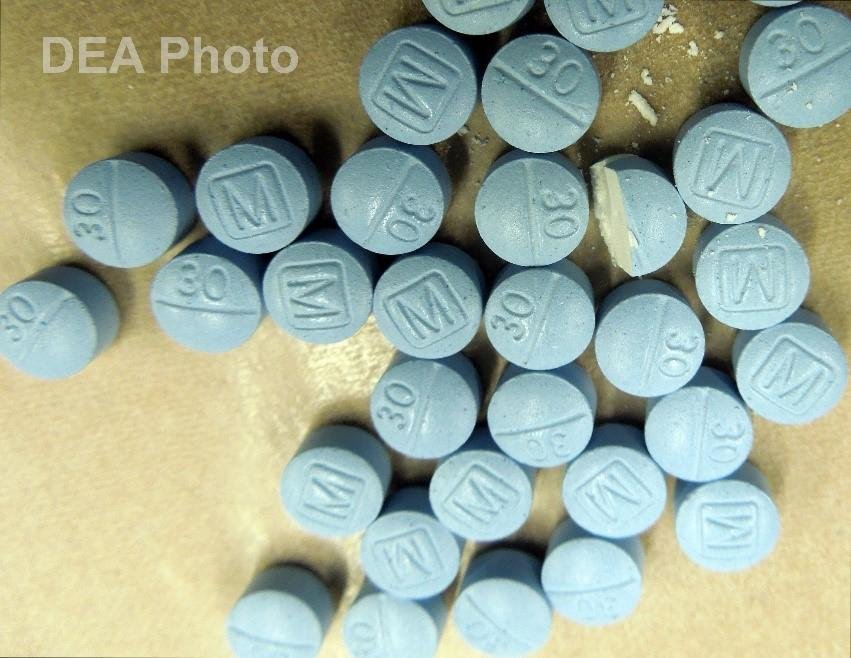CDC Report ‘Likely Underestimated’ Deaths Linked to Counterfeit Drugs
/By Pat Anson, PNN Editor
A new report from the Centers for Disease Control and Prevention found that fatal overdoses in the U.S. from counterfeit medication more than doubled in recent years, with 93% of those deaths involving illicit fentanyl.
Deaths from counterfeit pills rose from 2% of all overdoses in the third quarter of 2019 to 4.7% of drug deaths in the last quarter of 2021, according to the CDC’s Morbidity and Mortality Weekly Report (MMWR). The overdose rate from fake medication was three times higher in western U.S. states (14.7%).
However, due the unreliability of death certificates, witnesses and coroner investigations, as well as other flaws in the study’s methodology, the MMWR report acknowledges that the number of deaths involving counterfeit medication is “likely underestimated.”
CDC researchers only looked at overdose data from 34 states and the District of Columbia, identifying 2,437 deaths linked to counterfeit pills during the 30-month study period.
Nearly 106,700 people in the U.S. died from drug overdoses in 2021, so if the 4.7% death rate was applied to that year alone, that would suggest there were over 5,000 deaths nationwide involving counterfeit medication.
Even that estimate is probably on the low end, because CDC researchers focused on counterfeit pills made to look like oxycodone and the anti-anxiety drug alprazolam (Xanax).
While “Mexican Oxy” – blue tablets that look like 30mg oxycodone – are favored by counterfeiters, fake pills are also designed to look like Vicodin, Norco, Adderall, and many other medications. Deaths from those pills were not counted.
Importantly, whether a death was even linked to fake medication “depended largely on scene or witness evidence of pill use” and other anecdotal evidence, rather than toxicology tests on the pills or the actual people who died.
And while pills are obviously designed to be taken orally, the MMWR report only includes “noningestion routes of drug use,” such as smoking, snorting or injection, which require the pills to be ground into powder or liquefied. CDC researchers considered data on the oral ingestion of counterfeit pills so unreliable, “that information is not presented” in the report.
Many of these details on the study’s strange methodology are buried in the footnotes of the MMWR report, which a casual reader could easily miss.
Not surprisingly, given the limitations on data, smoking was found to have an outsized role in overdose deaths. According to the MMWR, nearly 40% of the deaths linked to counterfeit medication involved smoking – a misleading statistic, given the study’s flaws. But that didn’t stop researchers from drawing conclusions or recommending “safer smoking practices.”
“The higher percentage of deaths with evidence of drug use by smoking might reflect recent general shifts from injecting drugs to smoking them in western states or could be specific to counterfeit pill use methods,” wrote lead author Julie O’Donnell, PhD, an epidemiologist at the CDC’s National Center for Injury Prevention and Control.
“Harm reduction services that expand outreach to persons using drugs by methods other than injection, such as smoking, and provide education about safer smoking practices and risks related to smoking, might be most successful at addressing diverse drug use patterns.”
There’s a safer way to smoke illicit fentanyl?
This is the CDC’s first MMWR report to look exclusively at deaths caused by fake pills, a public health crisis that the agency has been slow to acknowledge. The DEA started warning about a “fentanyl crisis” as far back as 2016, a time when the CDC was preoccupied with its guideline to reduce opioid prescribing.
There were major flaws in CDC research even back then. The agency eventually admitted that thousands of overdose deaths linked to illicit fentanyl and other street drugs were misclassified as deaths caused by prescription opioids. Some deaths that involved more than one drug were counted multiple times.







